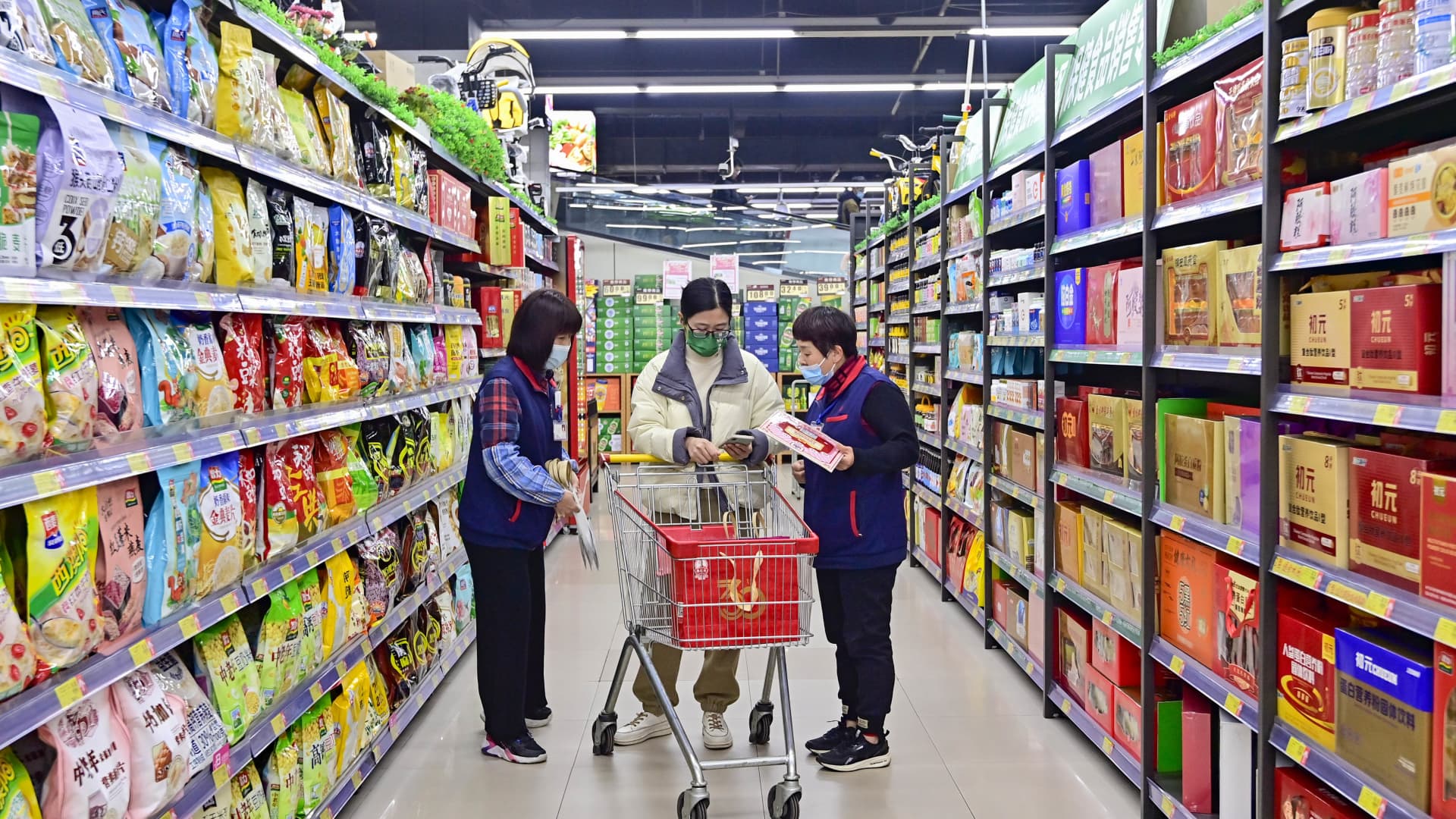Emerging brands grab market share in China and South Korea, forcing established ones to reinvent


Customers shop at a supermarket in Qingzhou city, East China’s Shandong province on Jan 12, 2024.
Future Publishing | Future Publishing | Getty Images
The rise of online shopping, social media and easier access to factories are driving the growth of new consumer brands in parts of Asia — putting pressure on traditional industry giants.
Over the last several years, such upstart consumer brands have been gaining market share in China and South Korea, according to a report from Bain and Company released Monday.
“The consumer products company of the future is going to need to be constantly reinventing its brand portfolio,” said David Zehner, head of consumer practice at Bain.
“If you’re able to both leverage the advantages that your scale and your incumbent position creates, while also being nimble and agile and responsive to the consumer,” he said, “then there is a chance that you can win, even despite the difficult environment, because there are so many insurgents.”
Bain defines an insurgent brand as a business that generates more than $25 million in annual revenues, has grown more than 10 times in their category’s average growth rate over the last five years and is independent or has been bought by a large firm in the last 2 years.
Incumbents are leaders in the sector and have a firm position in the market.
For example, sponge brand Scrub Daddy is an insurgent brand while its competitor Scotch-Brite is an incumbent one.
The company studied 23 consumer product goods categories across 11 Asia-Pacific markets from 2018 to 2022 to find out whether insurgent and incumbent brands were thriving or struggling in the countries surveyed.
China and South Korea stood out as markets where insurgent brands were doing particularly well.
Incumbent brands only grabbed market share in eight out of 23 sectors in China — sports, bath and shower, skincare, confectionery, sweet biscuits, milk formula, drinking milk products and juice, the Bain report said.
In South Korea, incumbent brands dominated just four sectors — fragrances, confectionery, diapers and bottled water, the report showed.
E-commerce boost
China and South Korea’s thriving e-commerce scene has made it easier for insurgents to penetrate these highly competitive sectors, Zehner highlighted.
Online shopping accounted for 34% of 2022 retail sales in South Korea, and 27% of such sales in China, the report said.
“We see a lot of brand launches in a market like China because it’s easy to reach consumers. It has become quite tough as an incumbent brand in those categories because you constantly have all of these new competitors,” Zehner told CNBC.

The country’s “insurgent friendly” market is also due to the boom in live streaming, he added, referring to a sales practice where sellers show and talk about products on social media to attract customers.
High penetration of e-commerce in Indonesia (26%) and Singapore (13%) also gave insurgent brands a boost. Incumbent ones only grew market share in seven and three sectors, respectively, out of 23 categories in each country, the Bain report said.
In contrast, emerging brands remain popular in Malaysia, the Philippines and India due to lower popularity of e-commerce and higher levels of traditional trade.
All three developing countries saw e-commerce sales penetration of less than 8% in 2022.
Fast-moving consumer trends
New consumer preferences, often influenced by social media, are generating demand for brands that can adapt quickly.
In South Korea, Zehner pointed out that new brands were able to benefit from trends in which “people change their whole wardrobe every season because what is popular has moved so quickly.”
“That’s in apparel. Same thing goes on in other consumer goods as well,” he said.
Industry structures are also fragmenting, allowing consumers and small business owners to communicate directly with factories.
“There’s also this ecosystem of third-party suppliers that allow a brand owner to very quickly outsource any part of its business if it needs to,” Zehner said, noting that rather than having to invest heavily upfront, new companies can find partners for every step.
By product, Bain found that insurgent hair care and skin care companies were the most popular among consumers, but when it came to confectionary, they preferred established brands.
It’s also unclear how long new brands can survive in such a competitive environment.
“For any one of those insurgents you may become very popular very quickly because of the ability to reach consumers so easily, but then you become a casualty of the next trend,” Zehner said.
Incumbent brands still hot
Bain’s findings revealed that despite the leaps insurgent brands have made in some markets, incumbent brands have maintained or increased their market share in others.
There was no single sector in which incumbents lost share across all Asia-Pacific markets, nor a single market where they lost share in all categories, according to the report.
For example, in the color cosmetics category, established brands won in two markets, lost in seven and remained stable in Singapore and Vietnam.
“There are trends, there are patterns but there are a lot of nuances and exceptions,” Zehner said.
“If you are an incumbent [brand] and you miss a new consumer trend and someone else gets it and grows the brand very quickly, you then have a choice — you can try to defend your existing position, you can try to innovate and find the next consumer trend, or try to acquire the brand that has just grown,” Zehner pointed out.
He added that during the pandemic, customers temporarily returned to brands they knew and trusted, and which had a more secured supply chain in place.









